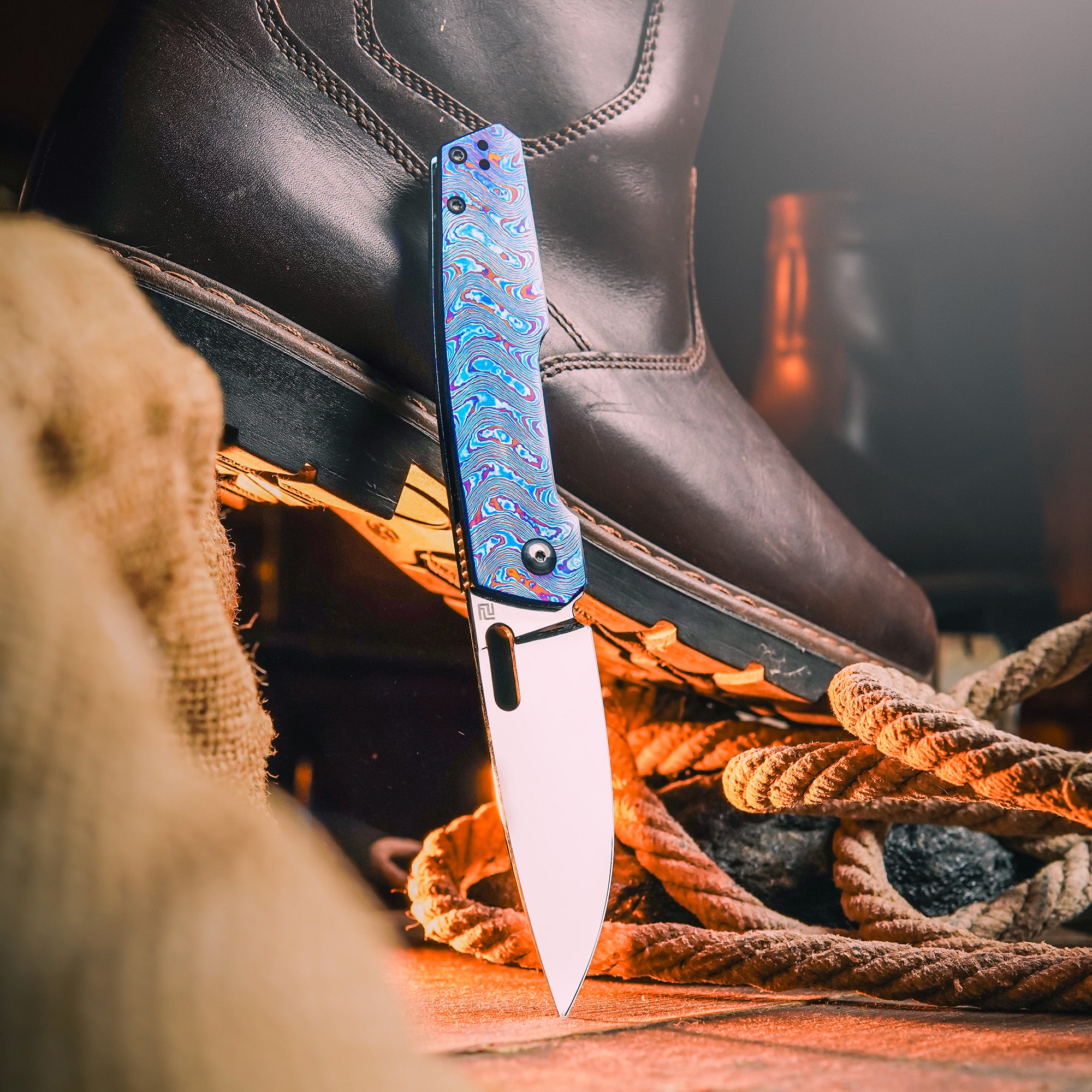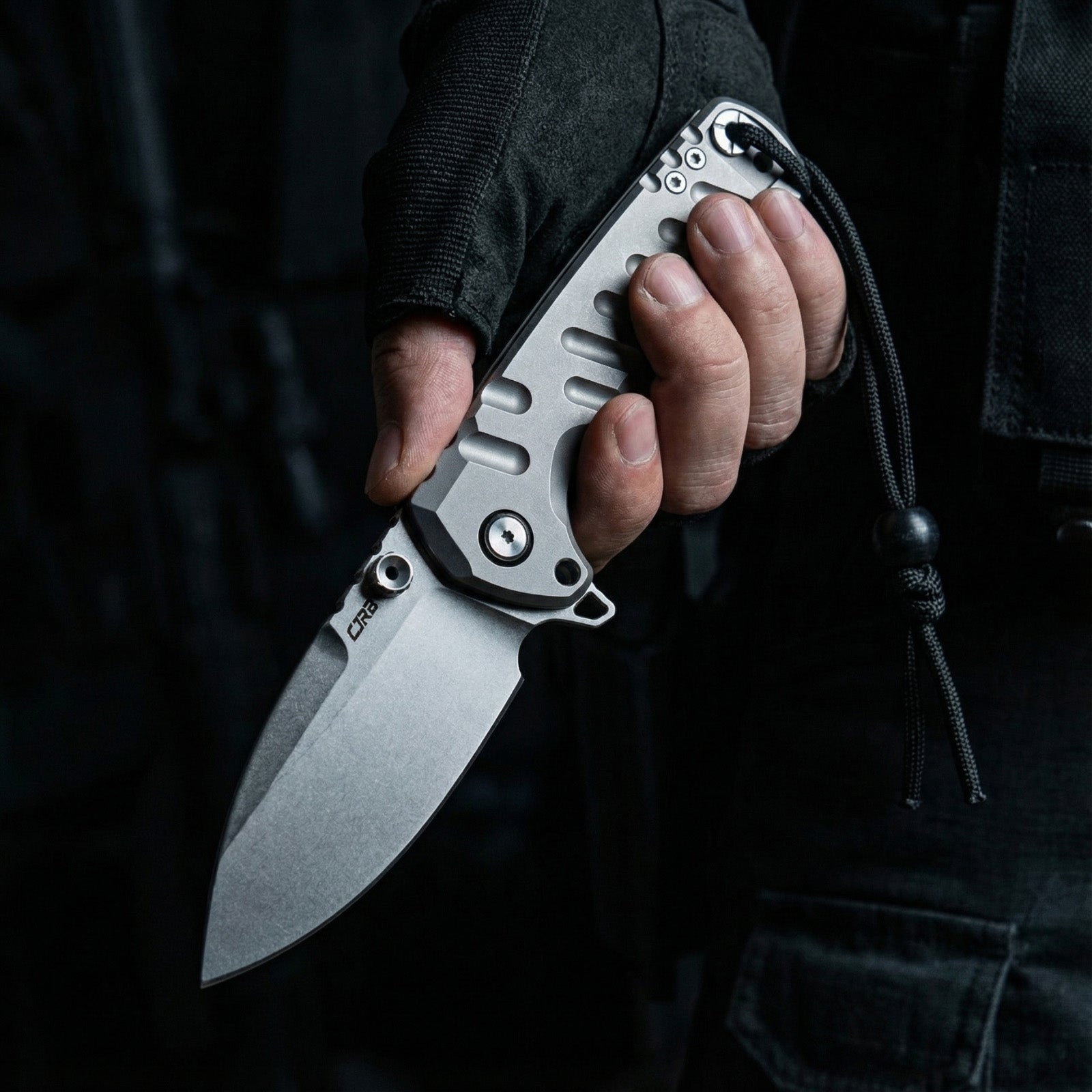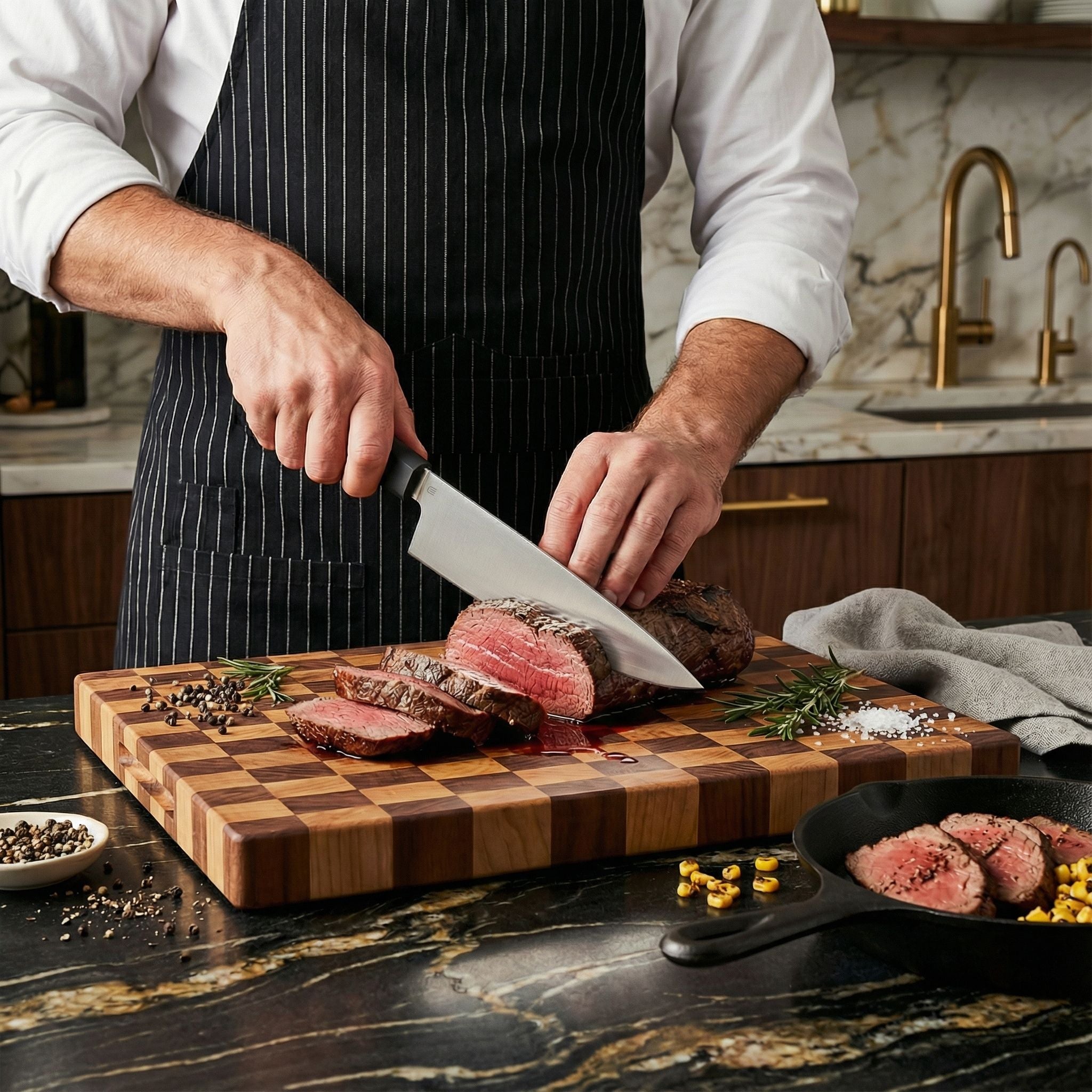Fixed-blade knives are the go-to gear for hunters, adventurers, and survival enthusiasts. These robust tools are prized for their straightforward design, long-lasting durability, and unwavering reliability. They're indispensable for anyone braving the great outdoors. Although foldable pocket knives bring the advantage of easy portability, a sturdy fixed blade excels in handling more demanding tasks.
That said, toting around a large, full-tang fixed blade isn't as straightforward as slipping a folding knife into your pocket. In this comprehensive guide, we'll delve into the best carrying methods to ensure your fixed-blade knife is both securely and conveniently stowed for your wilderness expeditions.
Why You Should Carry a Fixed Blade Knife?
Before we dive into carry options, let's review five key reasons you may want to have a fixed-blade knife readily accessible:
1. Strength and Durability
With a full-tang construction and no moving parts, a fixed-blade knife is stronger and more durable than a folding knife. The solid mass of steel can absorb shocks from batoning or prying without risk of failure. You never have to worry about a locking mechanism wearing out or a pivot screw coming loose. This makes fixed blades ideal for heavy-duty outdoor use.
2. Reliability
A fixed-blade knife offers greater reliability than a folder that could potentially fail to open or close when you need it most. Without any springs, liners, or hinges, there are fewer components that could malfunction. You can always count on a fixed blade to be ready for action when called upon.
3. Larger Size
Fixed blades allow for longer blade lengths and beefier construction than what is practical on most pocket knives. The increased size provides greater cutting power and leverage for tasks like processing firewood, field dressing games, or chopping vegetation. More steel mass also aids in penetration.
4. Quick Access
Unlike a folder, a fixed blade can be drawn and put to use within seconds. You don't have to fumble around opening it up first. The ability to swiftly deploy your blade could be a lifesaver in an emergency situation. Rapid access is crucial for self-defense applications as well.
5. Legality
In many jurisdictions, fixed-blade knives are subject to fewer legal restrictions than other styles like automatic or assisted opening knives. Fixed blades also aren't subject to any blade length regulations in most areas. This makes them a sensible choice for law-abiding citizens.
Now that we've covered the benefits of fixed-blade knives, let's look at 10 practical ways to carry them:
How to Carry a Fixed Blade Knife?

1. Waist or Belt Sheath
The most common way to carry a fixed-blade knife is in a sheath designed to attach to a belt or waistband. Look for sheaths made of durable materials like Kydex or leather that fully encase the blade for safety. Position horizontally on the hip or vertically just behind the front pocket for comfortable access. A belt sheath keeps the weight centered and allows you to draw and re-sheathe the knife with ease.
2. Neck Knife Sheath
For a minimalist option, consider carrying your fixed blade in a neck knife sheath. Smaller knives with a 2–5-inch blade can ride comfortably against your chest suspended by a bead chain or leather lanyard. Just slip the neck sheath over your head to keep your knife accessible but out of the way. This is a great choice for unobtrusive carry under clothing.
3. Shoulder Harness Sheath
Harness-style sheaths strap over your shoulder to allow carrying of full-size fixed-blade knives and even lightweight axes or machetes. Look for wide, padded straps to distribute weight-many feature additional stabilizer straps across the chest and waist. Shoulder carry keeps your gear handy without weighing down your belt.
4. Ankle Sheath
An ankle-mounted sheath lets you secret away a smaller fixed-blade knife without attracting attention. It will be out of sight but within easy reach. The ankle carry works best with slim profile knives. Look for a sheath with adjustable straps to customize the fit. Just beware of comfort since the uneven weight may feel awkward at first.
5. Boot Sheath
Your boots represent valuable real estate for carrying a concealed fixed blade. Opt for a boot knife with a built-in sheath that can be slipped into a sleeve or pouch inside your boot shaft. Consider adding foam padding around the sheath to cushion the knife and improve retention. Just be sure to choose footwear with adequate space to accommodate the knife.
6. Backpack Straps
Take advantage of the straps and webbing on your pack to mount a sheathed knife within arm's reach. Use zip ties, carabiners, Velcro, or creative lashings to position your knife where you can grab it quickly. You can also look for bags and packs designed with integrated sheaths and lash points for knives. External carry gets the weight off your belt while keeping your blade accessible.
7. Inside the Waistband (IWB)
Sheaths designed for inside the waistband (IWB) carry allow you to conceal a sizable fixed blade under an untucked shirt. Quality IWB sheaths hug close to the body to hide their outline. Look for a low-profile design with a contoured shape to maximize comfort and concealment. The handy clip also helps distribute weight off the waistband.
8. Chest Mount Harness
For even greater concealment, chest mount harnesses keep your fixed blade completely out of sight beneath clothing. These rigs strap around your torso like a shoulder holster to suspend your knife horizontally across your chest, where you can easily reach across and grab it. Though slower to deploy than open carry options, the chest mount offers outstanding concealment.
9. Tactical Thigh Rig
Law enforcement, military, and rescue personnel often employ thigh-mounted sheaths for their longer fixed-blade knives. Strapped to the belt and thigh for stability, a tactical thigh rig allows swift cross draw access. However, this carry style can be rather bulky and may not work well for plain clothes or low-profile use.
10. Off-Body Carry
If discreet carry is a concern, you can always stow your fixed blade in a pack, toolbox, or vehicle secured out of sight. Off-body carry sacrifices access but may be your only option in restricted environments. Consider pairing an on-body folder with an off-body fixed blade stored nearby for the best of both worlds.
Conclusion
With the right carry system, a fixed-blade knife can be surprisingly convenient and comfortable to have on hand for daily needs. The key is choosing a knife and sheath optimized for your intended purpose. Well-designed sheaths combined with proper positioning provide a widened range of practical fixed-blade carry options. So consider adding a stout fixed blade to your EDC rotation alongside your trusty folder. With a bit of experimentation, you'll find a fixed-blade carry method that suits your style and needs.










Leave a comment
All comments are moderated before being published.
This site is protected by hCaptcha and the hCaptcha Privacy Policy and Terms of Service apply.